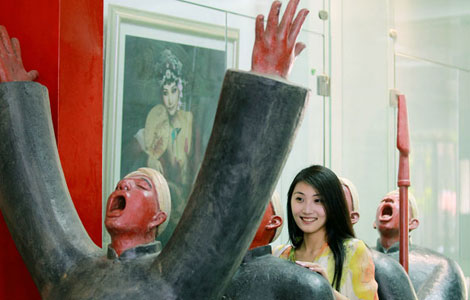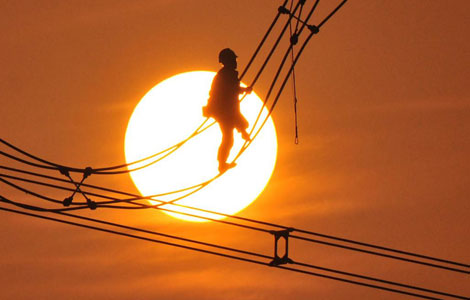Classic clash of the crickets
Updated: 2013-10-07 00:13
By XU JUNQIAN in Shanghai (China Daily)
|
|||||||||||
 |
|
Gu Haifang, who started the hobby more than 50 years ago, blames urbanization and pollution for difficulties in finding a good specimen today.[Photos by Gao Erqiang] |
According to the Shanghai Evening Post, hundreds of thousands of crickets are sold from a single flower and bird market in Shanghai every year.
An estimated 100,000 cricket connoisseurs in the city, the largest group in the country, might spend a billion yuan a year on their hobby, buying amenities ranging from nail-size ceramic water feeders to mini bamboo buckets for taking the insects outdoors.
"It's a game every boy grows up with in Shanghai, like the Barbie dolls for girls. Rich or poor, you can always enjoy it," said He Wen, a 39-year-old Shanghai native who founded the first website in China about cricket fighting, xishuai001.com.
"You can either catch a cricket from your back yard or squander tens of thousands of yuan on a breed believed to be invincible. But they do not necessarily win," He said.
The younger generation born in the 1970s and '80s who are fond of the game are more than ready to spend, though less acquainted with the pastime than older practitioners.
He told China Daily that he spends 50,000 yuan every year on his hobby and has also invested 100,000 yuan in the website since it was founded in 2003 as "a non-profit platform for cricket lovers all over the country to share information and passion".
There are about 70,000 registered members of the website, 70 percent of them below the age of 40, according to He. They meet in person no more than twice every year, mainly to fight their coddled crickets, but online discussions such as where to catch the fieriest fighters or what kind diet is more likely to produce a winner are underway daily.
Contests of all size and level range from one-to-one street fights to official tournaments organized by government, especially after the autumn equinox, a time when crickets are believed to have stored enough energy and are strong enough to fight.
Organized by the Qibao township government, the Jiuxing Cup tournament attracted more than 100 contenders and another hundreds in the audience in September. This year's champion took home 12,000 yuan.
"Our bottom line is no gambling is involved. If there is anything we don't want to pass on from our ancestors about the game, it's the gamble part, which seriously vulgarizes the otherwise genteel game and makes it notorious," said Gu, who is one of the organizers.
Gambling on cricket fighting is illegal in China. But "black market" cricket fighting involving gambling is common, said Gu. The high stakes drive up the price of a good specimen.
Today's Top News
US on path to default if Obama won't negotiate
Male teachers needed in preschools
Direction charted to resolve disputes
At least 51 dead in Egypt clashes
China, NZ pledge to further ties, cooperation
Chinese, Australian leaders pledge to boost ties
US forces conduct twin raids in Libya, Somalia
Boehner: No idea when govt shutdown ends
Hot Topics
Lunar probe , China growth forecasts, Emission rules get tougher, China seen through 'colored lens', International board,
Editor's Picks

|

|

|

|

|

|





